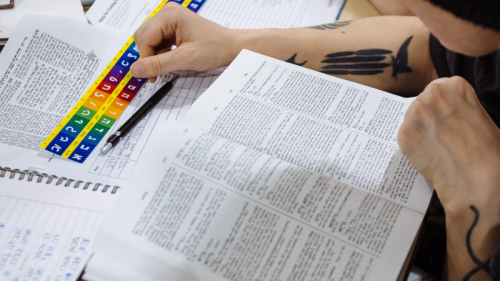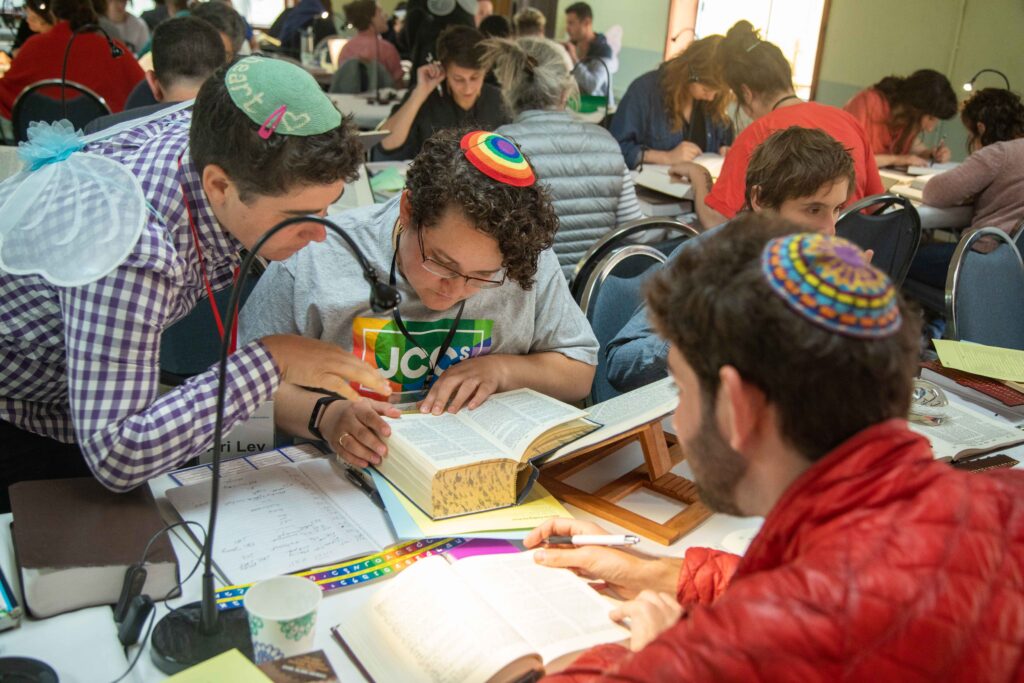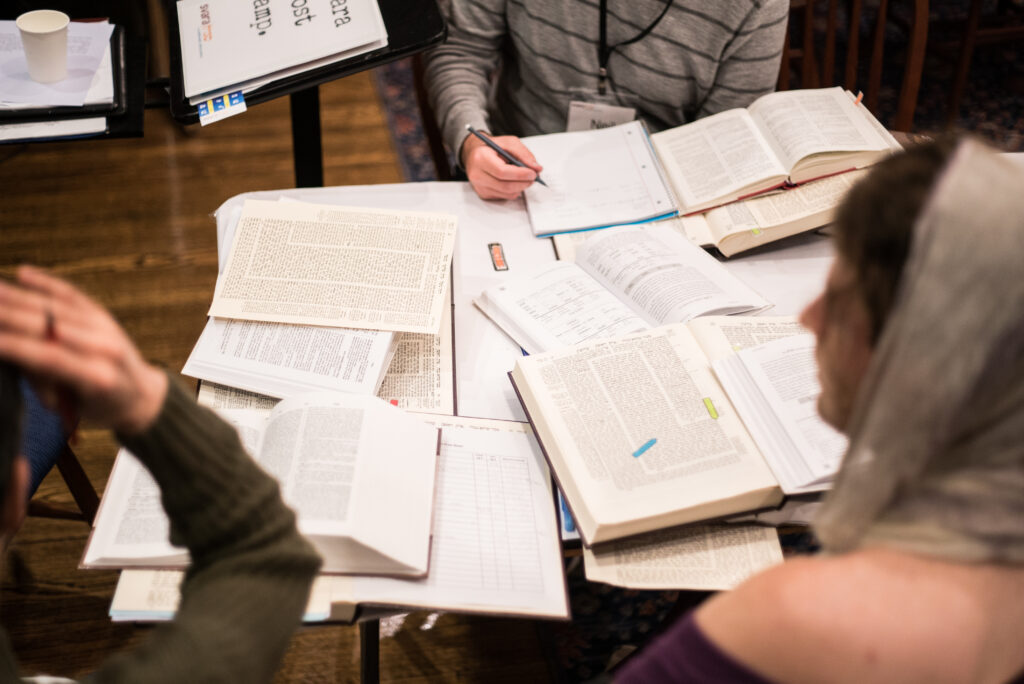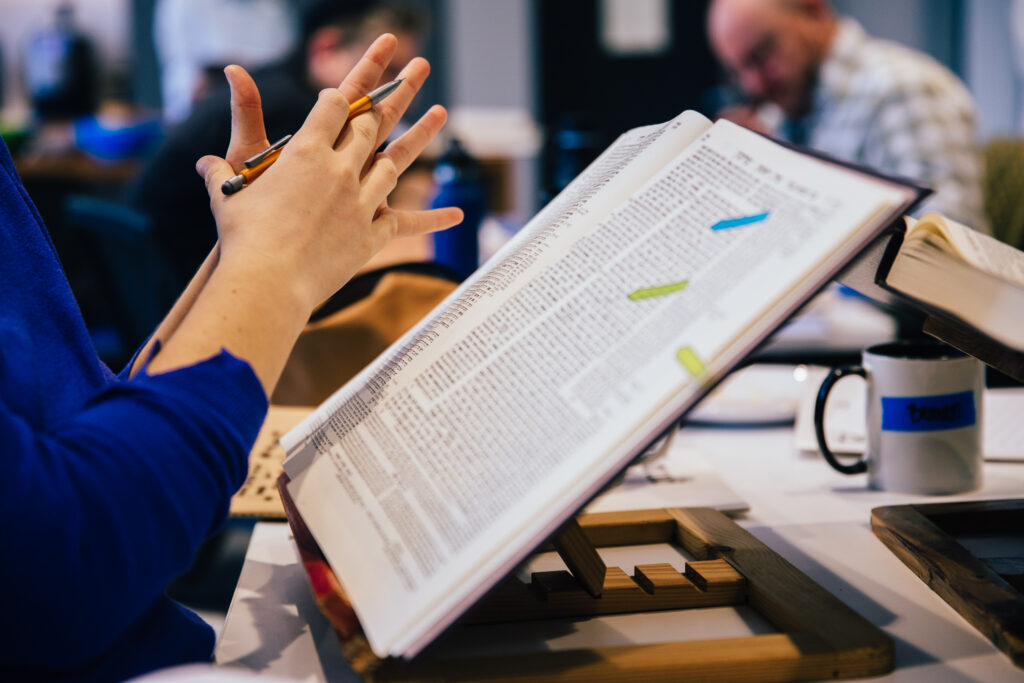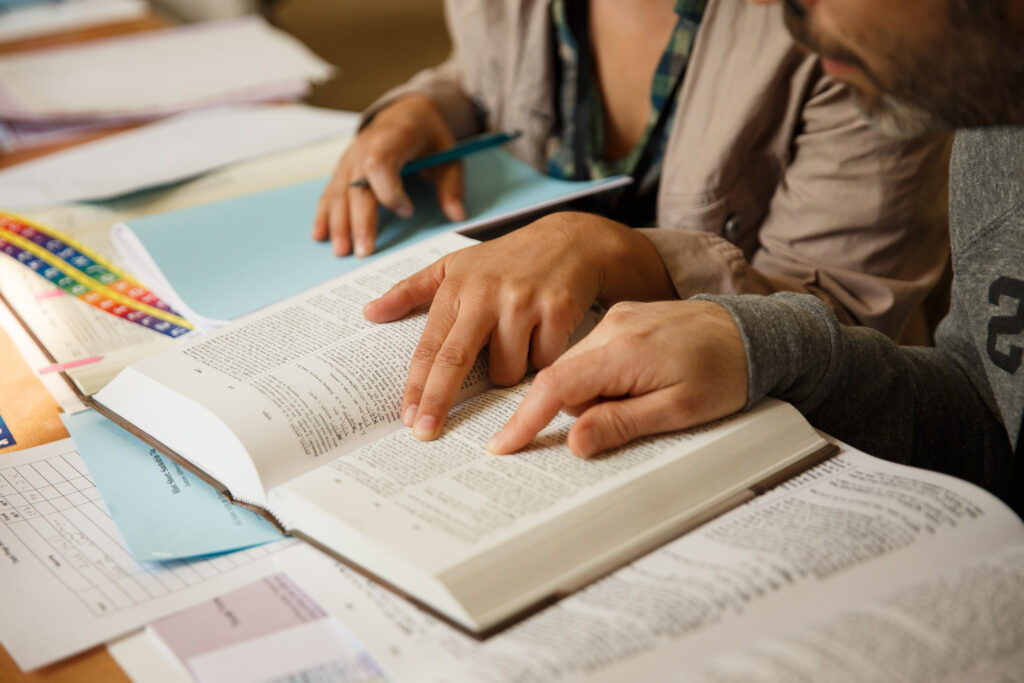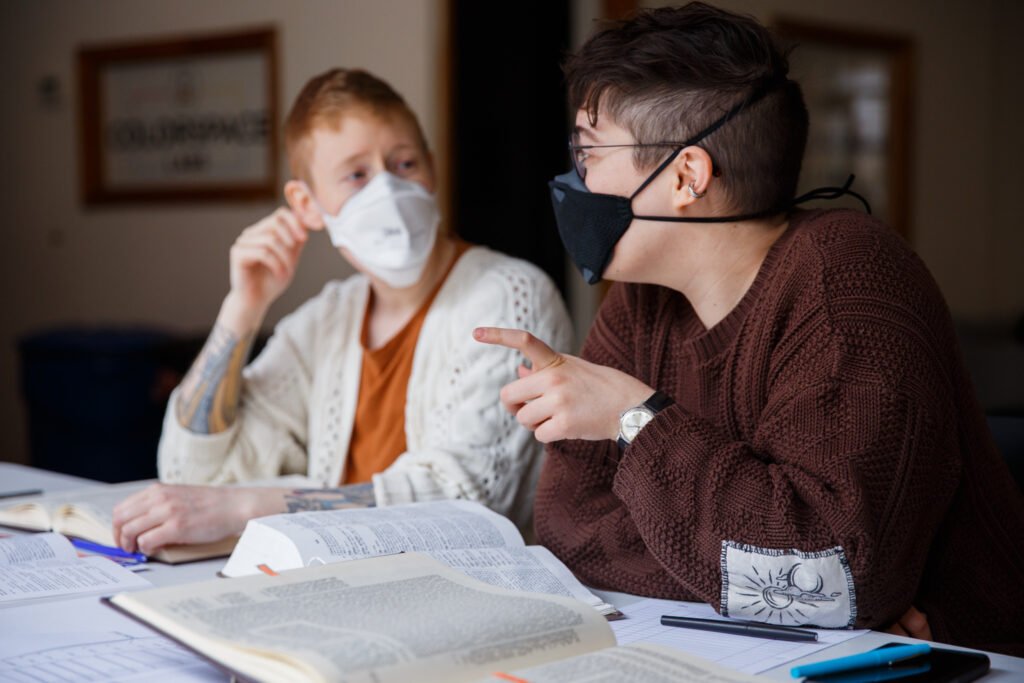When I became Jewish, I didn’t realize that I was looking for ancestors. And yet, as I emerged from the mikveh, the rabbis were mine, and I was theirs.
Of course, I already had ancestors. Though neither side of my family keeps up with our genealogy – whether due to histories of racialized and gendered violence, or mere disinterest and fading memories over time. Nor was my conversion the first time I claimed a lineage for myself. In the years leading up to that moment, I was beginning to see myself as an inheritor of black/feminist/queer thought. What I found compelling about both of these lineages, though, was how their multivocality and time-traveling nature laid the groundwork for me to read myself into them as both agent and recipient of the story we are crafting together.
Earlier this year, I learned a short sugya from Bava Batra 12a three times and taught it twice. In this text, we see the rabbis make a power move that reaffirms their role as the moral decisors and meaning makers of their day.
אמר רבי אבדימי דמן חיפה מיום שחרב בית המקדש ניטלה נבואה מן הנביאים וניתנה לחכמים
Rabbi Avdimi from Haifa said: “From the day the (first) Temple was destroyed, prophecy was lifted from the prophets and given to the sages.”
אטו חכם לאו נביא הוא
The stamma, dismayed, asks, “Do you mean to say that a sage is not a prophet?!”
הכי קאמר אף על פי שניטלה מן הנביאים מן החכמים לא ניטלה
Quickly, the stamma seeks to clarify this statement saying, “[R’Avdimi] really means that even though prophecy was lifted from the prophets, it was not lifted from the sages.”
With just a quick skim, it’s clear that the stamma is taking some liberties with Avdimi’s seemingly straightforward statement. There was a time when sages did not have the kind of connection with G!d that they do now. Something tragic happened and the world got all mixed up. Then, suddenly, they found themselves with the connection that was once strictly in the domain of the prophets. The stamma, on the other hand, is not satisfied with that statement and feels undermined by the implication that the sages were not always uniquely connected to G!d.
As I returned to this text week after week, I felt a deep connection with Rabbi Avdimi. I trusted his version of the story and wasn’t buying what the stamma was selling. The distinction between these two statements got me curious about who Rabbi Avidimi was. A quick look at Who’s Who in the Talmud tells us that Rabbi Avdimi was a third-generation amora hanging out in Eretz Yisrael, which would place him approximately 300-350 years from the destruction of the second Temple. While he would have no personal memories of the Beit HaMikdash, its destruction, and aftermath, he certainly knew stories. And living in Eretz Yisrael, his practice was shaped by its absence. His teachers’ teachers would have told stories of what it looked like, sounded like, and smelled like when the air was thick with smoke and people were being killed, and how they had to learn in secret. 300 years is a long time, and it isn’t.
I think of stories I have heard from my family about grandparents, great-grandparents, great-great-grandparents in Alabama and Mississippi. Hundreds of years of violence compounding in each story (the ones we tell and the ones we don’t), culminating in a move to Detroit where, hopefully, things would be different. Where we would be different. 400 years is a long time, and it isn’t.
For Avdimi, I imagine, his proximity to the collective trauma of 70 CE allowed him to feel the gravity of the impact of the destruction of the first Temple. When you think that the one place you could access G!d on this earth is destroyed, there is a rupture that is undeniable. Avdimi seeks to mend that rupture with a teaching establishing rabbinic legitimacy. A few hundred more years later and 600 miles away in Babylonia, the stamma’s distance in time and space lends itself to a more abstract reading. The need for establishing longevity has surpassed the need to establish legitimacy, and in establishing longevity, the stamma has minimized the trauma that shaped the rabbinic movement.
I realized what felt so destabilizing about this text. The ease with which the stamma quickly smooths over the trauma of the loss of the Temple and casts aside Avdimi’s truth, borne out of his proximity to the event, is a direct reflection of the things I love most about this tradition: its cross-generational, time-travelling, multivocal record keeping that places us in direct conversation with our ancestors.
Of course we are changed by our experiences and those of our ancestors. I understand the move the stamma is making, but I’m not ready to accept it – and I might never be. The way our tradition holds these conflicting statements side by side reminds me that neither of them is correct nor incorrect. Rather, they are an invitation to reflect on where and how I find myself in our collective story. To borrow language from Ross Gay’s Be Holding, I can only describe this type of reading practice as “the reaching that makes of falling flight.” It’s in the reaching where we begin to learn who we are. Every time we engage these texts, holding them alongside the unique histories we carry within us, we act as witnesses to rupture and displacement. Through that witness, we begin the dual processes of recovering what was lost and transforming it into our own.

